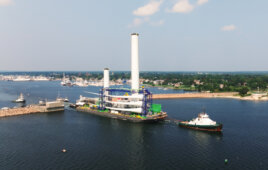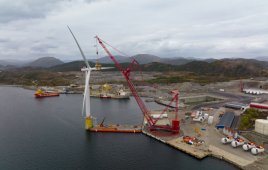By David Clark, CMS Wind
About 50% of drivetrain failures are in the generator, and they are predictable by months with the right detection. The failures are grouped into three specific categories: bearing-related, electrical-related and misalignments. We’ve already discussed electrical fluting, and now we’ll describe misalignments.
Misalignment between the gearbox output (or high-speed shaft) and the generator input causes bearing failure. This misalignment is very easily detected with vibration analysis assuming that the proper sensor, sensor placement, measurement, measurement configuration and analysis has happened. Condition monitoring is a “do it once and do it correctly” process. If your CMS is not measuring misalignment, it is not configured correctly.
One should find misalignments to avoid future catastrophic and avoidable bearing failures. There are one-third more failures on the drive end vs. the non-drive end of the generator because of misalignment. Imagine a car’s front tire out of alignment and how it wears far faster than the aligned version. It is the same scenario on the generator bearing.
What is the cost effectiveness of measuring misalignment? There are a few considerations here to save O&M and predict failures:
- Align only the towers that need alignment
- Detect misalignment several months ahead of a failure
- Correct the failure mode by aligning and stopping the failure curve
- Place the bearing replacement on your maintenance timeline
While you can align all 100 towers on a site, it is far more cost effective to align the handful that actually need help prior to catastrophic failure. Detection is easy through vibration testing. Simple detection is enough to send a technician up-tower with a laser alignment tool.

Before and after misalignment vibration readings. Arrows show vibration peaks specifically measuring misalignment.
Keep in mind that some wind turbine generators in the field can have nearly seven-times more allowable misalignment than in factory-floor equivalents. The flexible bedplate vs. the factory’s concrete floor is responsible for the disparity.
It is important to test for misalignment when it is most common: at commissioning and replacement. There can also be seasonal misalignment because of thermal growth and expansion.
How do you check for misalignment if SCADA data and temperature are not effective? Properly configured vibration condition monitoring detects misalignment easily, remotely and effectively.
Filed Under: Featured





